My retreat project, as you know from all of my preparations, was the Fabric of the Year quilt for 2010. I had high hopes that I would get the whole thing pieced. I enjoy doing the colorwork at the retreat, because I can get a lot of different opinions and I like knowing what other people see. Also, I feel like I have more space to spread out.
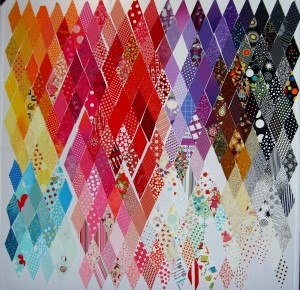
Above is the way I started the FOTY on Friday afternoon.
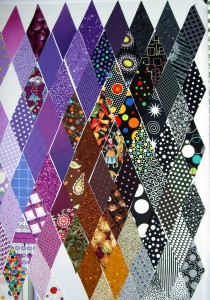
Above is the dark corner. Again, I was trying for the a colorwash kind of look across the quilt from right to left.
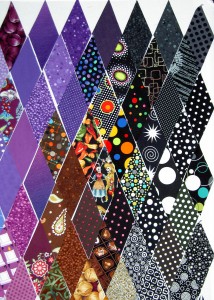
As I laid out the piece, it was interesting to see, visually, the amount of darks and colors.
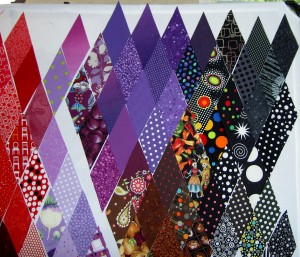
This was the first layout. You can see a bit of the red next to the purple. Eventually, I took all the red off of the design board and put blue next to the purple. I did a backwards ROY G BIV working from right to left, though if you look at it when it is finished, the ROY G BIV will read correctly (see below).
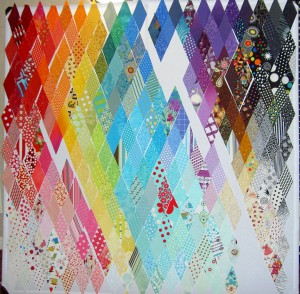
Above, you can see that I have changed out the red for the blue in the center and put the red on the left edge. Most of the diamonds I have to work with for this project are blue. The design wall was not large enough for me to put up all of the patches, so the reds and pinks only got a representative sampling to begin with. As I worked through Friday afternoon and evening, then Saturday, I came to the realization that this piece was going to take longer than I thought. Putting it together was a lot more of an intellectual exercise than I expected. Part of the reason, I think, was that I wanted to put it together in chunks, which made the spaces created by the sewn seam allowances end up in strange places.
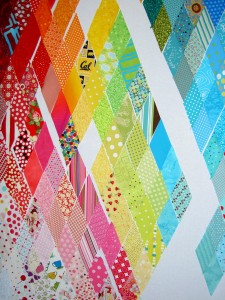
Those seam allowance spaces became unexpectedly large as I sewed, which turned out to make keeping track of where pieces went really difficult.
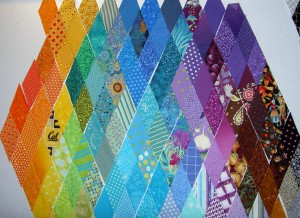
One challenge was the different amounts of colors I had. Another challenge was that the fabrics mostly did not consist of only one color. I tried to block out all but the background or dominant color in my mind in order to place the patches, it wasn’t always possible.
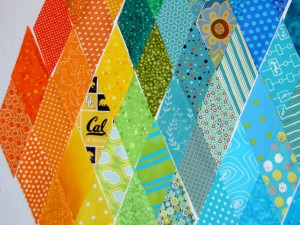
Above, which is the upper left hand section, is the least formed part of the quilt, and still, in the photo above, in quite a bit in flux.
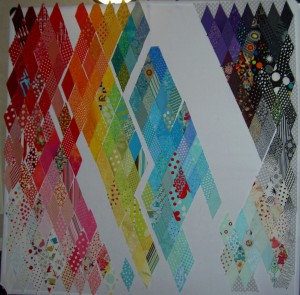
In some ways putting the piece together got easier as I sewed larger chunks together. In other ways, it got to be more of a problem, because the spaces, as I mentioned, between the chunks got larger.
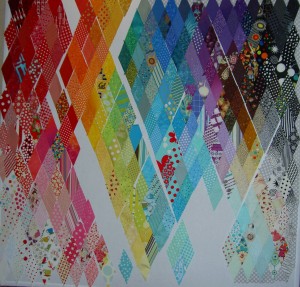
The bottom left corner was really my big problem. I don’t know what happened, but something happened early on and I still haven’t completely resolved the problem in that corner. I am working through it, but as I don’t seem to have a photo of the whole piece after I moved the red, it is proving to be a challenge. I am having to lay out that corner again as I go along. Lots of unsewing is required.
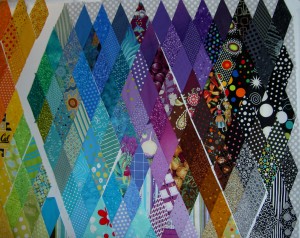
Are you bored yet?
The top right and middle were ok and I was able to sew some large chunks together.
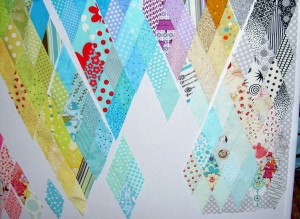
No matter what I did with that bottom right corner, there still seemed to be large missing chunks of patchwork. Sigh. At this point, in addition to taking big deep breaths, I realized I wasn’t going to get the piece finished. Not what I wanted to face, but I wanted to do a good job and that was the reality.
It was a bit liberating to admit that, because I felt like I could look at the piece and didn’t have to rush straight to sewing.
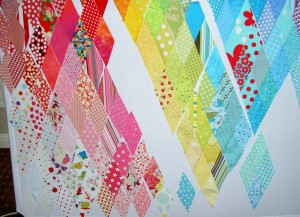
I was able to put a few pinks up as the seam allowances shrank the whole piece, leaving more space. I had faint hope that some miracle would occur and I would finish the piecing.
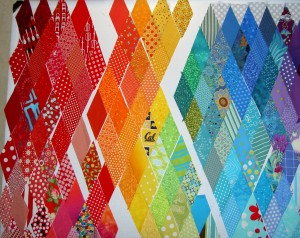
I was also able to add some of the reds that didn’t fit when I started.
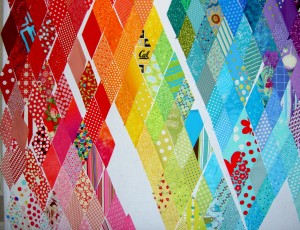
The large seam allowances seemed to keep moving as well.
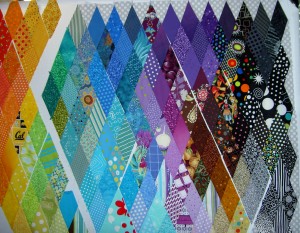
This was the well behaved part of the quilt right before I took the whole thing down so I could go home.
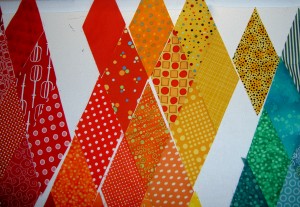
IYellows and oranges were ignored, for the most part.
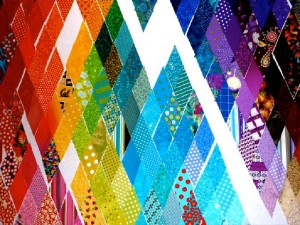
Virginia took this picture while she was visiting. It is really helpful to see what other people see in my pieces.
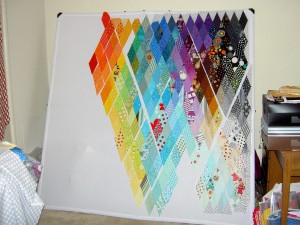
Julie helped me roll up the piece in the flannel of the portable design wall so I could bring it home and set it up again. My plan is to chip away at the rest of the layout and piecing. Not finishing puts me behind in my mind’s quiltmaking schedule, but I am sure there is a reason that I didn’t finish. I certainly didn’t expect the intellectual piecing challenge of this project. I am sure it is good for me.